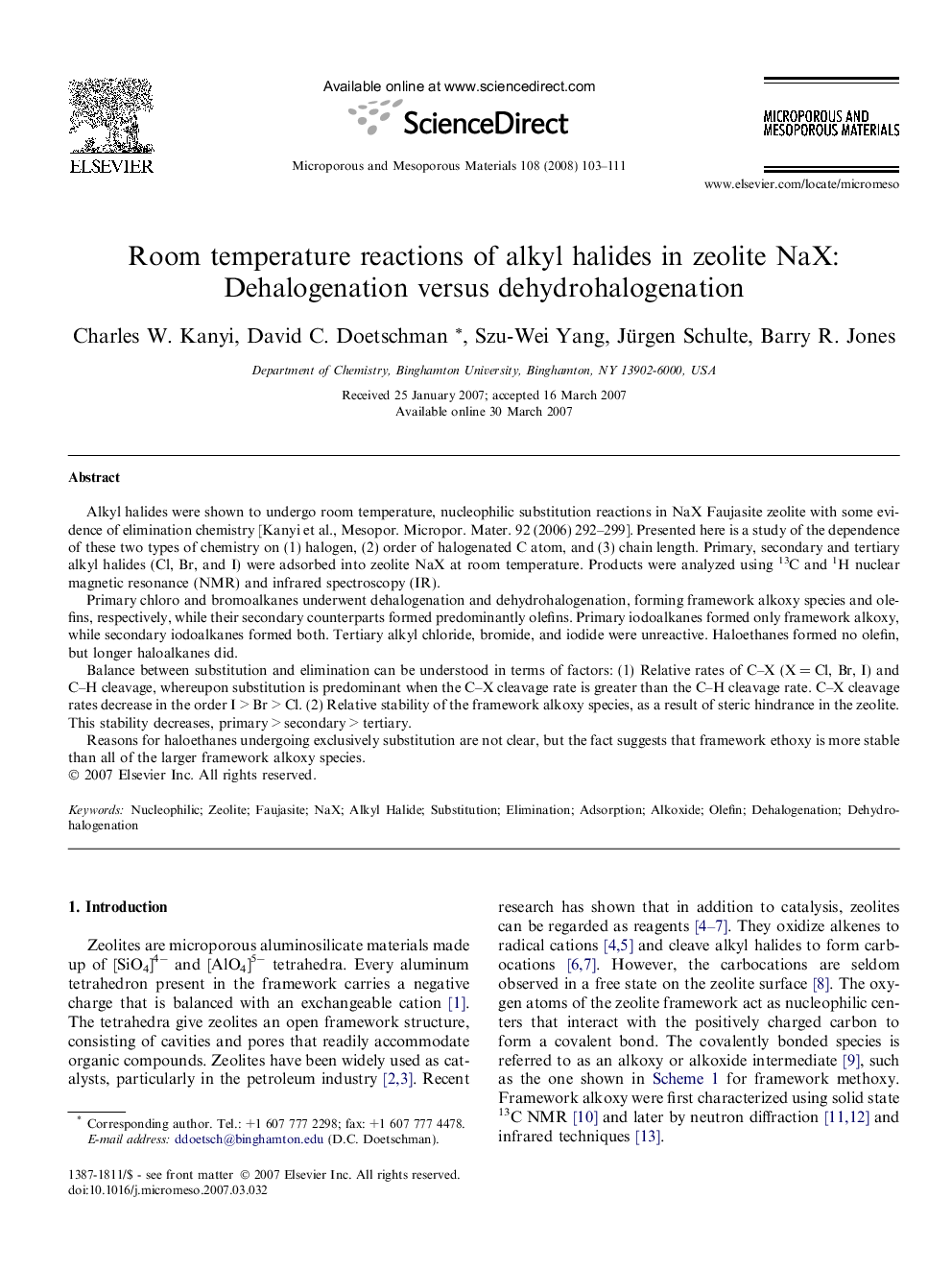| Article ID | Journal | Published Year | Pages | File Type |
|---|---|---|---|---|
| 75979 | Microporous and Mesoporous Materials | 2008 | 9 Pages |
Alkyl halides were shown to undergo room temperature, nucleophilic substitution reactions in NaX Faujasite zeolite with some evidence of elimination chemistry [Kanyi et al., Mesopor. Micropor. Mater. 92 (2006) 292–299]. Presented here is a study of the dependence of these two types of chemistry on (1) halogen, (2) order of halogenated C atom, and (3) chain length. Primary, secondary and tertiary alkyl halides (Cl, Br, and I) were adsorbed into zeolite NaX at room temperature. Products were analyzed using 13C and 1H nuclear magnetic resonance (NMR) and infrared spectroscopy (IR).Primary chloro and bromoalkanes underwent dehalogenation and dehydrohalogenation, forming framework alkoxy species and olefins, respectively, while their secondary counterparts formed predominantly olefins. Primary iodoalkanes formed only framework alkoxy, while secondary iodoalkanes formed both. Tertiary alkyl chloride, bromide, and iodide were unreactive. Haloethanes formed no olefin, but longer haloalkanes did.Balance between substitution and elimination can be understood in terms of factors: (1) Relative rates of C–X (X = Cl, Br, I) and C–H cleavage, whereupon substitution is predominant when the C–X cleavage rate is greater than the C–H cleavage rate. C–X cleavage rates decrease in the order I > Br > Cl. (2) Relative stability of the framework alkoxy species, as a result of steric hindrance in the zeolite. This stability decreases, primary > secondary > tertiary.Reasons for haloethanes undergoing exclusively substitution are not clear, but the fact suggests that framework ethoxy is more stable than all of the larger framework alkoxy species.
